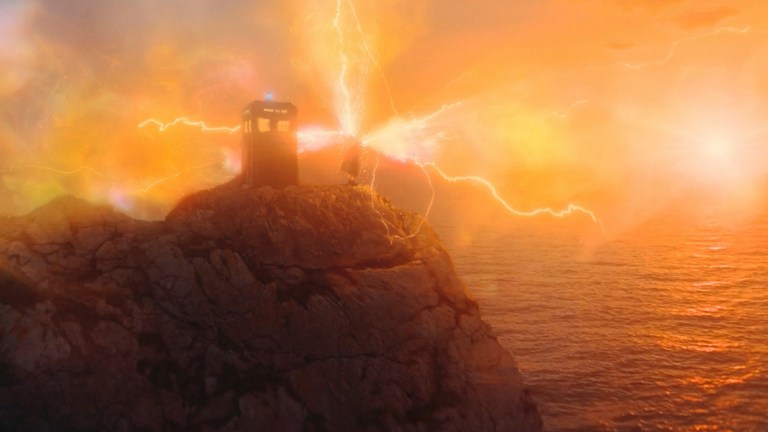Doctor Who: Jodie Whittaker’s Regeneration Stirs Durdle Door Controversy
Durdle Door owners worry the regeneration scene will encourage ‘dangerous’ behaviour

Warning: Contains major spoilers for Doctor Who ‘The Power of the Doctor’
News is emerging that the owners of Durdle Door aren’t too happy about their historic landmark being the scene of the thirteenth Doctor’s regeneration in Doctor Who.
Over four million of us tuned in on Sunday night to watch Jodie Whittaker’s Doctor shockingly regenerate into David Tennant in the climax of her final episode, ‘The Power of the Doctor’. It was one of the most anticipated TV moments of the year, and – judging from the reactions on Twitter – the Whovians went wild, essentially becoming the personification of the ‘screaming, crying, throwing up’ meme.
Although many fans were possibly so beside themselves about Tennant’s return that they barely registered where the scene was filmed, this particularly scenic regeneration took place on top of the famous Durdle Door arch near Lulworth in Dorset. However, the owners of the land have now told The Sun newspaper they didn’t know this was the plan when they gave permission to film there.
James Weld, whose family has owned the land since 1641, said: ‘If we had known we would not have agreed because of the encouragement that this may give to some of our visitors to put themselves in a dangerous position.’
Although the regeneration scene was created using special effects, and neither Jodie Whittaker nor David Tennant actually scaled Durdle Door during filming, it’s thought some Doctor Who fans may attempt to climb the landmark and recreate the scene.
While the Weld family claim they didn’t get a ‘proper description’ of how Durdle Door would be used during filming, and are now saying they may turn down further requests to film there, a BBC spokesman has explained that this particular scene of the BBC Centenary episode was ‘a tightly kept secret’. The spokesman continued: ‘Although we were granted permission to film with a drone we weren’t asked how the location would be portrayed on screen.’
The 200-foot limestone arch is already a subject of controversy as it’s a popular ‘tombstoning’ site, where adrenaline junkies climb to the top so they can dive into the sea. During the 2020 lockdown, hundreds of people ignored police warnings and flocked to the beach at Durdle Door, and three people were seriously injured when diving off the iconic landmark.
It certainly wouldn’t be the first time the Whoniverse has caused fans to pilgrimage to real-life locations: back in 2009, when beloved character Ianto ‘Coffee Boy’ Jones was mercilessly killed off in Torchwood’s ‘Children of Earth’ series, fans went into such a meltdown over his death that they created a shrine for him on Mermaid Quay, Cardiff Bay. Ianto’s Shrine still exists to this day, with fans from all over the world sending notes, decorations and artwork to be displayed there, and the shrine has even had visits from John Barrowman and Ianto actor Gareth David-Lloyd himself.
And it’s also not exactly the first time Doctor Who has featured iconic or recognisable landmarks in an episode: several well-known Sheffield locations were spotted during Jodie Whittaker’s first series, and nearly all of London’s biggest landmarks have made an appearance. In particular, Shakespeare’s Globe Theatre was where David Tennant’s Doctor and Martha Jones thwarted a Carrionite invasion, a Slitheen aircraft destroyed the iconic clock face of Big Ben and a spaceship replica of the Titanic very nearly flattened Buckingham Palace. At least Durdle Door thankfully managed to survive its appearance on Doctor Who unscathed.
Doctor Who: The Power of the Doctor is available to watch on BBC iPlayer.
